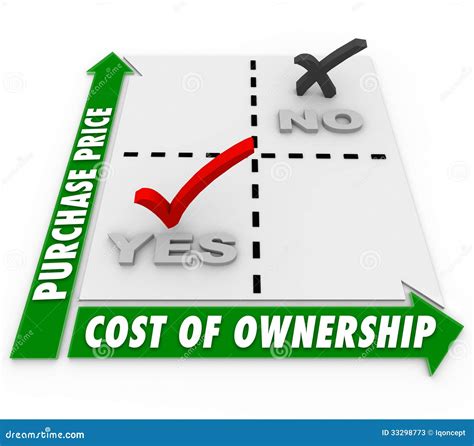The True Cost of Ownership: Beyond the Purchase Price
Buying something new—a car, a house, even a fancy coffee machine—often focuses heavily on the initial purchase price. But savvy consumers know that the sticker price is just the tip of the iceberg. The true cost of ownership encompasses a far wider range of expenses, impacting your budget long after you've swiped your credit card. Understanding these hidden costs is crucial for making informed financial decisions and avoiding future headaches.
What is the True Cost of Ownership (TCO)?
The true cost of ownership (TCO) represents the total expense of owning an asset over its entire lifespan. This goes far beyond the initial purchase price and includes all associated costs, both direct and indirect. Failing to consider TCO can lead to significant financial strain and regret. It's a holistic approach to budgeting that allows for a more realistic financial picture.
Beyond the Sticker Price: Key Components of TCO
Several factors contribute to the true cost of ownership. Let's break them down:
1. Depreciation: The Silent Thief of Value
This is often the largest single cost for many assets. Depreciation refers to the decrease in an asset's value over time. A new car, for example, can lose a significant portion of its value the moment it leaves the dealership. Understanding the depreciation rate of an item is vital for projecting its long-term cost.
2. Maintenance and Repairs: The Unexpected Expenses
Regular maintenance is crucial for extending the lifespan of any asset. From oil changes for a car to roof repairs for a house, these costs can add up quickly. Unexpected repairs can also significantly impact your budget. Factor in potential breakdowns, wear and tear, and the need for parts replacements.
3. Insurance and Taxes: The Ongoing Obligations
Insurance premiums and property taxes are ongoing costs associated with owning many assets. These are often predictable but can still represent a substantial portion of the total cost of ownership. Shop around for competitive rates to minimize these expenses.
4. Fuel and Utilities: The Running Costs
For cars, fuel consumption is a major ongoing expense. Similarly, owning a home involves utility bills for electricity, water, gas, and more. These costs can fluctuate based on usage and market prices.
5. Financing Costs: The Interest Burden
If you finance your purchase, interest payments represent a significant portion of the TCO. The total interest paid over the loan's lifetime can significantly exceed the initial purchase price. Consider the overall cost of financing when comparing different loan options.
How to Calculate the True Cost of Ownership?
Calculating TCO requires careful planning and research. Start by listing all anticipated expenses, including:
- Initial purchase price: The upfront cost of the asset.
- Depreciation: Research the expected depreciation rate for similar assets.
- Maintenance and repairs: Estimate annual maintenance costs and consider potential major repairs.
- Insurance and taxes: Determine the annual cost of insurance and property taxes (if applicable).
- Fuel and utilities: Estimate annual consumption and associated costs.
- Financing costs: Calculate the total interest paid over the loan's lifetime.
Add all these costs together to arrive at a comprehensive estimate of the TCO over the asset's projected lifespan.
Frequently Asked Questions
What are some examples of assets where TCO is especially important?
TCO is particularly critical for large purchases like houses, cars, and major appliances. These items have significant upfront costs and ongoing expenses that can impact your financial health for years.
How can I reduce the true cost of ownership?
Careful research, diligent maintenance, and smart financing choices can all help minimize TCO. Comparing prices, researching reliability ratings, and opting for extended warranties can also save money in the long run.
Is it always worth calculating TCO before buying something?
While not always necessary for smaller purchases, calculating TCO is highly recommended for major purchases to avoid financial surprises and ensure you're making informed decisions.
By understanding and calculating the true cost of ownership, you can make more informed purchasing decisions, avoiding financial pitfalls and ensuring your budget can comfortably handle the long-term implications of your acquisitions. Don't just look at the sticker price; look at the complete picture.

